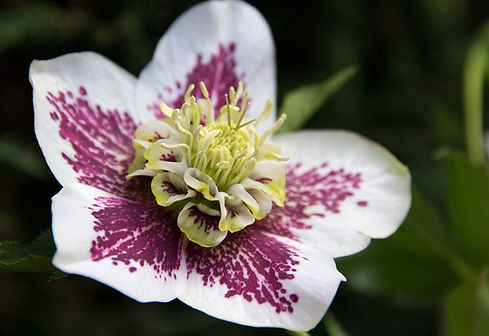Hellebores blossom/Pexels/Gordon Bishop
I am looking out the window at a cold, dreary, rainy sight. If only it were snow!! But it’s not. You must realize by now that I love the snow. Oh well, since I cannot play in the snow, why not think of spring! One beautiful plant that comes to mind as I think of spring is the Lenten Rose. Wake up to this beautiful flower in early spring that lasts for weeks.
(Some of the links within this post are affiliate links on which I receive a small compensation from the sale of certain items with no extra cost to you.)
(As an Amazon Associate I earn from qualifying purchases.)
A Little History
The Lenten Rose, actual name Hellebores, was given its nickname from its time of bloom. It blooms between February and April (and beyond!). This corresponds to the 40 day period between Ash Wednesday and Easter Sunday known as Lent in Christianity.
The Lenten Rose usually symbolizes serenity, peace, and tranquility. However, in Victorian days the flower symbolized delirium and in some societies today it represents anxiety, stress and scandal. Perhaps it symbolized delirium due to its poisonous nature.
According to metmuseum.org “mythological physician Melampus was said to have observed the cathartic effect of hellebore on goats who browsed on the plants. Melampus used the milk of these same goats to cure the daughters of the King of Argos of a divinely inflicted madness, and hellebore was sometimes called melampodium”. For more information on the myth, click the link above.
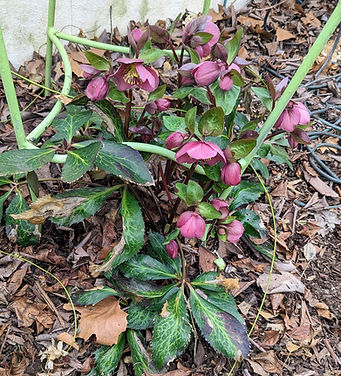
The Beauty of the Lenten Rose – Characteristics
This beautiful flower has many welcoming characteristics.
- It is a long bloomer. The flowers of the Lenten Rose will bloom beginning in late winter through possibly May, at least 8 to 10 weeks.
- It comes in a variety of colors such as apricot, maroon, white, dusty pink, yellow, green, slate, and metallic blue.
- There are 20 different varieties (shop with Etsy) of this plant. They range from single petaled to double petaled, while others are packed with numerous petals.
- They are deer and rabbit resistant. However, they are toxic to humans and pets so place them appropriately in your garden. Wear gloves when working with them.
- The plants look beautiful even after they have bloomed. They grow in a mounding, small bush form and have medium to dark, leather-like leaves that last through the winter. They grow 18 to 24 inches tall and wide.
- It’s a great pollinator. Bees love the Lenten Rose, especially the early honey bee. They begin scavenging for pollen once the temperatures reach 45 F or above. Since hellebores begin blooming early, they provide some tasty eats for honey bees.
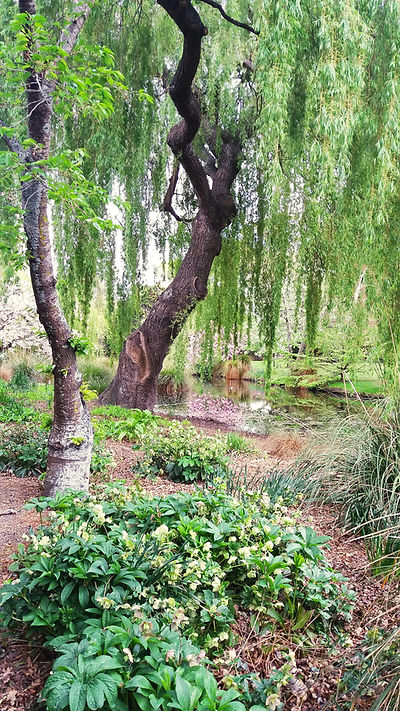
Hellebores under canopy of trees/ Nareeta Martin/ Unsplash
Waking Up to Spring – An Easy Perennial to Grow
The Lenten Rose is one of the easiest perennials to grow in your garden. It is not that fussy about soil, but needs to be placed in the proper location for optimal blooms.
The Lenten Rose (Hellebores) is not a rose, it is actually in the buttercup family, Ranunculaceau, and is native to Turkey and Greece. If you look at the flower you can see it’s resemblance to a drooping buttercup.
It is a herbaceous perennial, so it will delight you with blooms year after year and its leaves will remain evergreen.
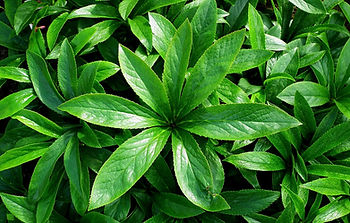
Hellebores leaves/ Pixabay
The Lenten Rose grows from slow, creeping rhizomes. Some varieties have a bit of an odor. Depending on the variety, the fragrance can be sweet smelling, slightly skunky or no odor at all.
Place them where they can expand. They will slowly spread.
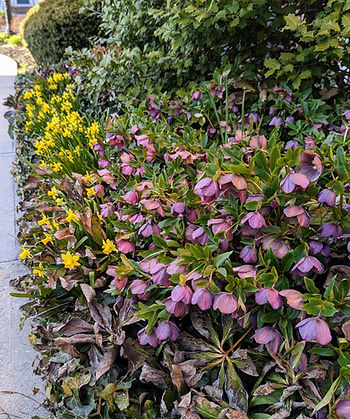
Hellebores paired with yellow daffodils
Zones
They grow well in zones 3 through 9. Click here to determine your growing zone in the USA.
Early Risers
Two white blossomed hellebores that can bloom in December under snow are HCG Josef Lemper, and Potter’s Wheel. Another, called HCG Cinnamon Show, has pink buds which open to white blossoms. Other varieties will begin blooming in very early spring.
Light Requirements
They prefer partial sun to full shade. East or west exposures, or even a northern exposure, will accommodate this plant. However, partial shade is the ideal amount of light exposure. Too little light will result in fewer blossoms. They also look beautiful under a canopy of trees.
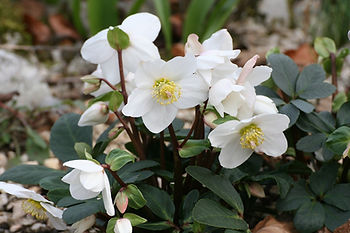
White Christmas Hellebores/ Pixabay/ Rollstein
Soil and Mulch Requirements
Hellebores prefer slightly neutral to acidic soils. Good garden soil will suffice. If your soil is less than perfect, add some compost to the soil before planting. Then add mulch surrounding the roots, but not touching the stem of the plant.
Water Requirements
Do not plant them where water pools. The roots will rot if they lay in too much water. As with any newly planted flower, water regularly the first year but do not overwater. A two gallon watering can filled half way is enough water once a week if you are not in a drought. Water twice a week if you have very dry conditions.
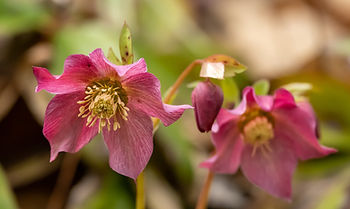
Pink Hellebores / Pexels
Fertilizer
No need to fertilize. Once they are established they will do fine all on its own.
Late Winter/Early Spring Maintenance
Cut back any brown, dead, or diseased stems in late winter or early spring once you see new foliage emerge.
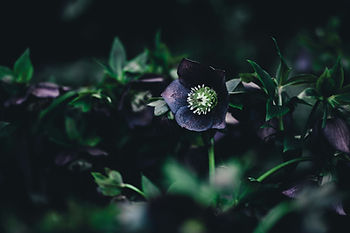
Black Hellebores/ Unsplash/ Annie Spratt
Dividing/Propagation of the Lenten Rose
You can divide the plant in late fall or winter before new foliage pops up. Below is a YouTube video explaining how to divide the plant.
The plant will also self seed by dropping seeds that will germinate next winter. They can also be carried off by the wind. If you want to collect the seeds, collect the brown pods before they fall to the ground. It will take 3 years before the next plant blossoms.
Wake Up To Spring – Lenten Rose
If you are yearning for spring or would like beautiful foliage in your winter garden consider planting the Lenten Rose, otherwise known as Hellebores. This lovely plant will delight you year after year and is so easy to maintain!
Take a chance on this underrated plant. What do you have to lose?
If you are interested in more early risers, check out Planting Primrose and Early Spring Blooming Perennials.
I hope you liked this post. Please comment below and share with others. I’d love to hear from you.
Happy Gardening,
Nina
bestgardeningforbeginners@gmail.com
www.bestgardeningforbeginners.com

